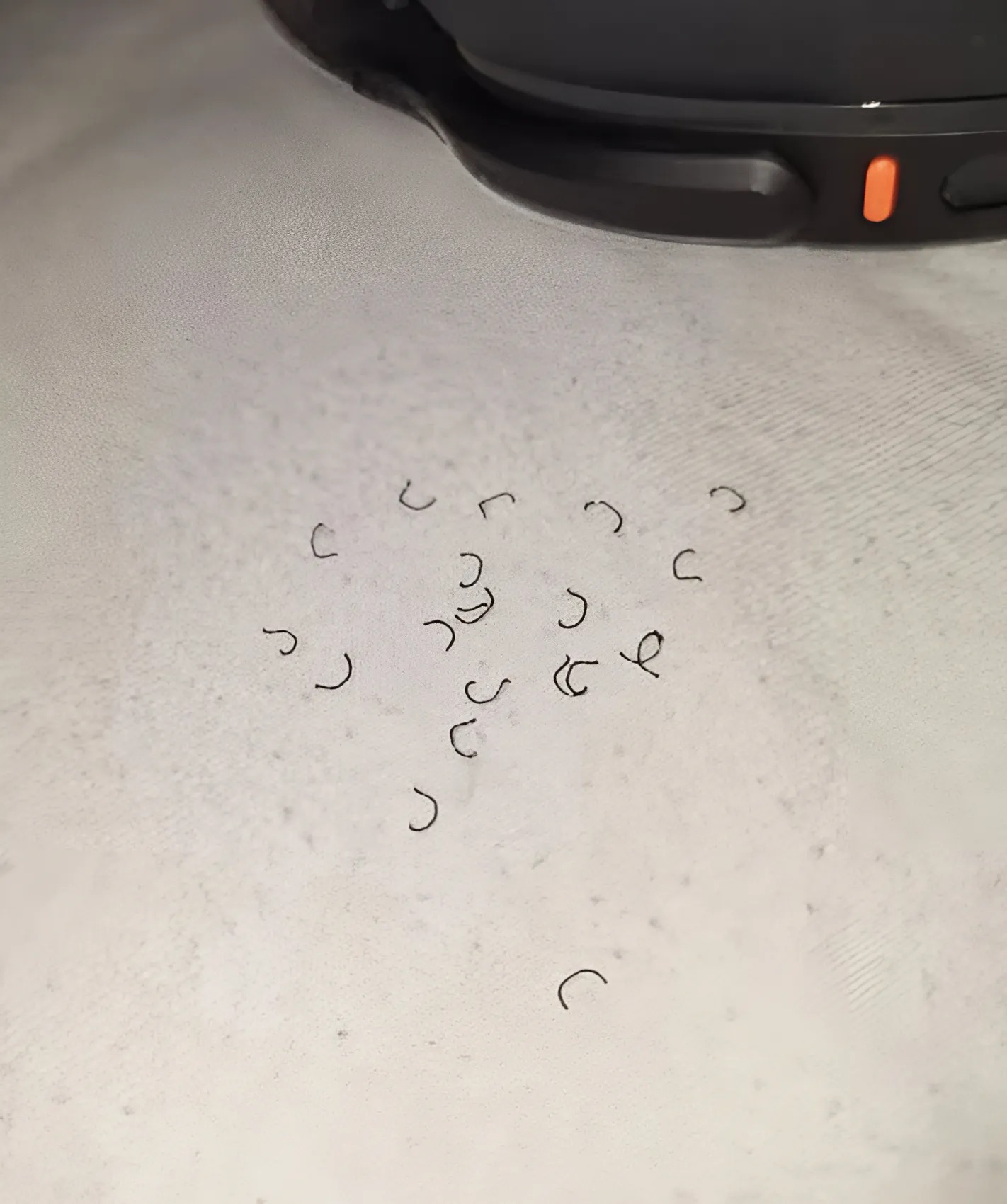I woke up one morning and saw them scattered across my sheets — tiny, strange little bits that looked like lint or maybe stray hairs. Still half-asleep, I brushed at them absentmindedly, thinking they were just some fuzz from my clothes or maybe dust from the blanket. But something about them seemed off. They weren’t soft like lint, and they had a weird texture — almost like little twisted rubber threads. The longer I looked, the more unsettled I felt. What were they? And why were they everywhere?
Then it hit me.
I’d taken off my smartwatch the night before and placed it beside my pillow like I usually do. Those tiny pieces weren’t just lint — they were fragments of the silicone band. My watch strap had been silently disintegrating, and now parts of it were all over my bed.
It turns out this is more common than you’d think, especially if your watch has a silicone or rubber band. Over time, daily wear and friction slowly wear down the material. Every time you type at your keyboard, rest your wrist on a table, adjust your watch, or even just move your hand, there’s constant rubbing against surfaces. Add to that sweat, skin oil, and maybe a bit of dust or lotion, and you’ve got the perfect recipe for gradual degradation.
Those small specks — which look a bit like Velcro hooks or rubber crumbs — are early signs that your band is starting to break down. And while they aren’t harmful, they’re definitely a red flag. Left unchecked, your band could eventually crack, tear, or even break unexpectedly. That’s not just annoying — it could mean dropping and damaging your watch.
Cheaper bands are especially vulnerable. Many low-cost straps are made from basic silicone blends that just don’t hold up under constant use. If your band feels sticky, has started peeling, or shows signs of surface cracking, it’s probably time to say goodbye. On the other hand, higher-quality bands made from fluoroelastomer — a more durable and heat-resistant material — tend to hold their shape and appearance for much longer. They cost more, but they’re often worth it.
If you’ve noticed bits flaking off or if your wrist feels irritated under the strap, don’t wait. Get a new band before the old one fails at the worst possible moment.
In the meantime, there are a few simple things you can do to prolong the life of your current band. First, keep it clean. A quick rinse under warm water with a bit of mild soap goes a long way. Gently scrub it with your fingers or a soft cloth to remove sweat and residue, then pat it dry with a towel.
Also, try alternating between different bands if you have more than one. Giving your strap a break — literally — can reduce the constant strain on the material. If you tend to wear your watch tight, consider loosening the clasp a notch or adjusting where it sits on your wrist. Small changes can significantly reduce friction and wear.
And when it’s finally time to buy a new band, don’t just go for the cheapest option. Read reviews, check the material specs, and invest in something that’s built to last. A slightly higher price upfront often saves you from replacing it over and over again.
So, if you’ve ever spotted those little bits on your desk, your bedsheets, or your wrist and thought, What on earth is that?, now you know. It’s your watch’s quiet way of saying, Hey, I’ve done my job — maybe it’s time for an upgrade.





